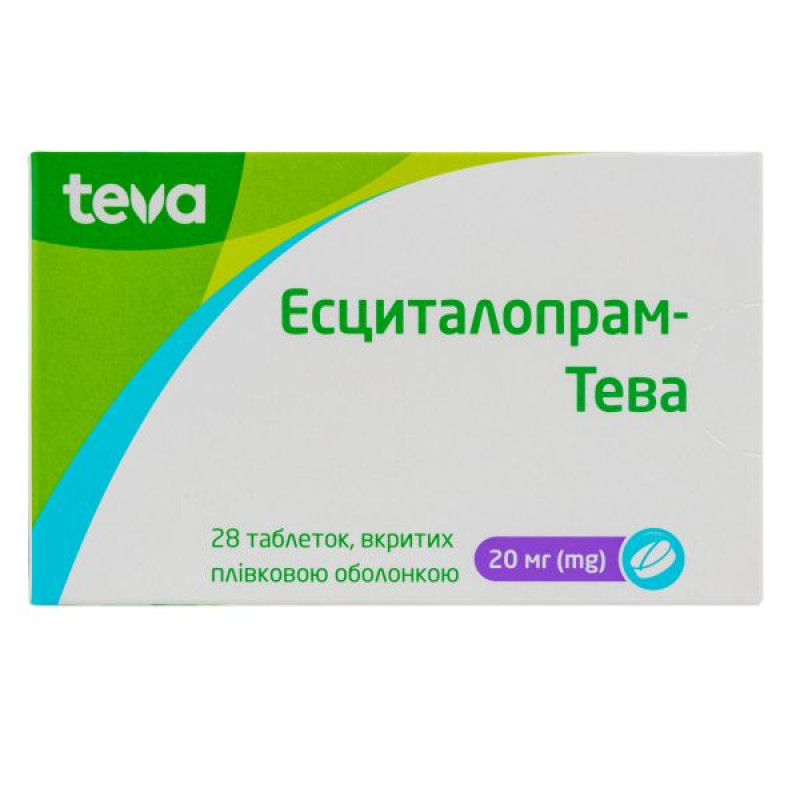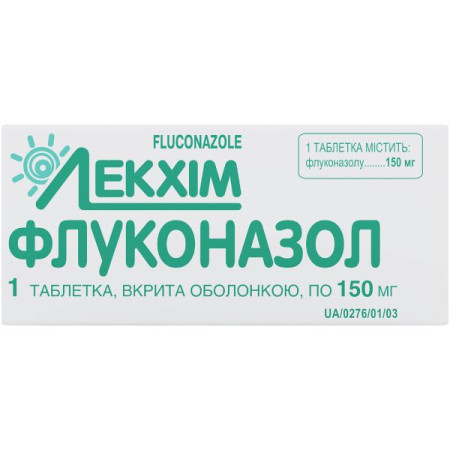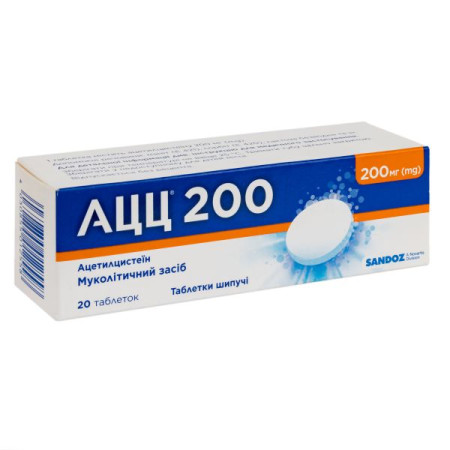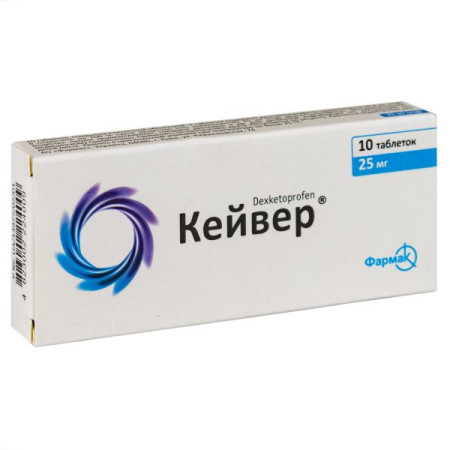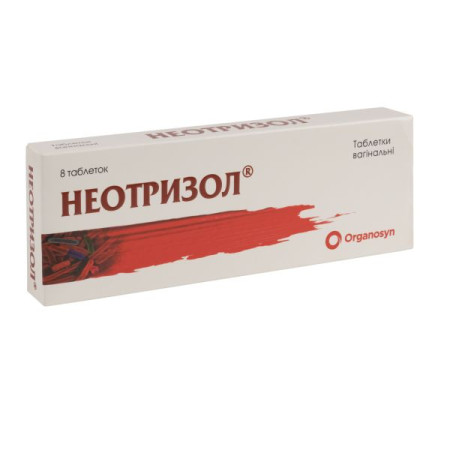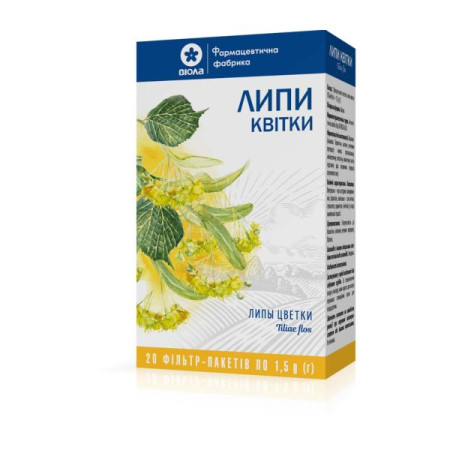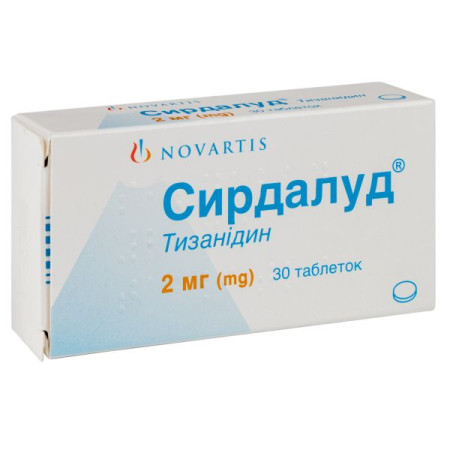Escitalopram-Teva film-coated tablets 20 mg blister No. 28

Instructions for use Escitalopram-Teva film-coated tablets 20 mg blister No. 28
Composition
active ingredient: escitalopram;
1 tablet contains escitalopram 5 mg, 10 mg, 15 mg, 20 mg;
excipients: core: microcrystalline cellulose, colloidal anhydrous silicon dioxide, croscarmellose sodium, stearic acid, magnesium stearate;
shell: hypromellose, titanium dioxide (E 171), macrogol 400.
Dosage form
Film-coated tablets.
Main physicochemical properties:
Escitalopram-Teva, 5 mg: white, round, biconvex, film-coated tablets, embossed with "5" on one side of the tablet and plain on the other side of the tablet. No cracks or chips are observed.
Escitalopram-Teva, 10 mg: white, round, biconvex, film-coated tablets with “10” embossed on one side of the tablet and a breakline on the other side of the tablet. No cracks or chips are observed.
Escitalopram-Teva, 15 mg: white, round, biconvex, film-coated tablets with a breakline on one side, embossed with "S" to the left and "C" to the right of the breakline. The other side is embossed with "15", without visible cracks or chips.
The score is not intended to break the tablet into two equal doses, but to make swallowing easier.
Escitalopram-Teva, 20 mg: white, round, biconvex, film-coated tablets with a score line on one side, embossed with "9" to the left and "3" to the right of the score line. The other side is embossed with "7463", without visible cracks or chips. The tablet can be divided into two equal parts along the score line.
Pharmacotherapeutic group
Antidepressants. Selective serotonin reuptake inhibitors (SSRIs). ATX code N06A B10.
Pharmacological properties
Pharmacodynamics
Escitalopram is an antidepressant, an SSRI (5-HT) with high affinity for the primary binding site. It also binds to the allosteric site of the serotonin transporter with 1000-fold lower affinity.
Escitalopram has no or very weak binding to a number of receptors, including 5-HT1A-, 5-HT2-, dopamine D1- and D2- receptors, α1-, α2-, β-adrenergic receptors, histamine H1-, muscarinic cholinergic, benzodiazepine and opiate receptors.
Inhibition of serotonin (5-HT) reuptake is only a possible mechanism of action that may explain the pharmacological and clinical effects of escitalopram.
Pharmacokinetics
Absorption is almost complete and independent of food intake. The mean time to reach maximum concentration (mean Tmax) is approximately 4 hours. The absolute bioavailability of escitalopram is expected to be 80%.
The apparent volume of distribution (Vd, β/F) after oral administration is 12–26 l/kg. The binding of escitalopram and its major metabolites to plasma proteins is less than 80%.
Escitalopram is metabolized in the liver to the demethylated and didemethylated metabolites. Both are pharmacologically active. Nitrogen can also be oxidized to the N-oxide metabolite. Both metabolites and the parent compound are partly excreted as glucuronides. After multiple administration, the average concentration of the demethylated and didemethyl metabolites is usually 28-31% and <5% of the concentration of escitalopram, respectively. The biotransformation of escitalopram to the demethylated metabolite occurs mainly with the help of cytochrome CYP2C19. Some participation of the enzymes CYP3A4 and CYP2D6 is also possible.
The elimination half-life (t1/2) after multiple administration is approximately 30 hours. The plasma clearance after oral administration is 0.6 l/min. The main metabolites of escitalopram have a longer half-life. Escitalopram and its main metabolites are believed to be eliminated via the liver (metabolic pathway) and the kidneys. The majority is excreted as metabolites in the urine.
Escitalopram has linear kinetics. Steady-state concentrations are reached in approximately 1 week. The mean steady-state concentration of 50 nmol/l (range 20 to 125 nmol/l) is achieved with a daily dose of 10 mg.
Elderly patients (aged 65 years and over)
Escitalopram is eliminated more slowly in elderly patients than in younger patients. The amount of substance in the systemic circulation, calculated using the pharmacokinetic parameter "area under the curve" (AUC), is 50% higher in elderly patients than in young healthy volunteers.
Liver dysfunction
In patients with mild or moderate hepatic impairment (Child-Pugh class A and B), the half-life of escitalopram was almost doubled and exposure was 60% higher than in subjects with normal hepatic function.
Kidney dysfunction
In patients with reduced renal function (CLcr 10–53 mL/min), an increase in the half-life of racemic citalopram and a slight increase in exposure were observed. Plasma concentrations of metabolites have not been studied, but an increase can be assumed.
With insufficient activity of the CYP2C19 isoenzyme, double the concentration of the drug in the blood plasma was observed compared to that in patients with normal metabolism of escitalopram.
No significant changes in exposure were observed in CYP2D6 isoenzyme deficiency.
Indication
Treatment:
Ø major depressive episodes;
Ø social anxiety disorders (social phobia);
Ø generalized anxiety disorders;
Ø obsessive-compulsive disorders.
Contraindication
Hypersensitivity to the active substance or to any other component of the medicinal product. Concomitant treatment with non-selective irreversible monoamine oxidase inhibitors (MAOIs) due to the risk of developing serotonin syndrome, which is manifested by agitation, tremor, hyperthermia.
Combination treatment with escitalopram and reversible type A MAOIs (e.g. moclobemide) or reversible non-selective MAOIs (e.g. linezolid) due to the risk of serotonin syndrome.
If the patient is known to have QT prolongation or congenital long QT syndrome, use with drugs that prolong the QT interval is contraindicated.
Concomitant treatment with pimozide.
Interaction with other medicinal products and other types of interactions
Pharmacodynamic interactions.
Contraindicated combinations
QT prolongation
Pharmacokinetic and pharmacodynamic studies of escitalopram in combination with other drugs that prolong the QT interval have not been conducted. An additive effect of escitalopram and these drugs cannot be excluded. Therefore, the simultaneous use of escitalopram with drugs that prolong the QT interval, such as antiarrhythmic drugs of class IA and III, antipsychotics (e.g. phenothiazine derivatives, pimozide, haloperidol), tricyclic antidepressants, certain antimicrobial drugs (e.g. sparfloxacin, moxifloxacin, erythromycin for intravenous use, pentamidine, antimalarials, in particular halofantrine), certain antihistamines (astemizole, mizolastine) is contraindicated.
Non-selective irreversible MAOIs
Serious reactions have been reported in patients receiving SSRIs in combination with non-selective, irreversible MAOIs and in patients who have recently stopped taking SSRIs and switched to similar MAOIs. Serotonin syndrome has occasionally occurred in patients. The combination of escitalopram with non-selective, irreversible MAOIs is contraindicated. Escitalopram treatment should not be started until 14 days after the last use of an irreversible MAOI. In turn, MAOI treatment should not be started until 7 days after the end of escitalopram treatment.
The combination of pimozide and racemic citalopram resulted in a prolongation of the QT interval by approximately 10 msec. Due to the interaction of escitalopram with low doses of pimozide and increased side effects of the latter, the simultaneous use of these drugs is contraindicated.
Reversible non-selective MAOI (linezolid)
The antibiotic linezolid is not recommended for use in patients receiving escitalopram. If such a combination is necessary, treatment should be initiated at the lowest recommended dose with close clinical monitoring.
Reversible selective MAOI type A (moclobemide)
The concomitant use of escitalopram with a reversible, selective MAOI type A (moclobemide) is not recommended due to the risk of serotonin syndrome. If such a combination is necessary, treatment should be initiated at the lowest recommended dose with careful clinical monitoring. Treatment with escitalopram should not be started earlier than 1 day after discontinuation of the reversible MAOI moclobemide.
Irreversible selective MAO inhibitor type B (selegiline)
Due to the risk of serotonin syndrome, caution is required when escitalopram is used concomitantly with selegiline. Selegiline doses up to 10 mg/day are safe for concomitant use with racemic citalopram.
Combinations that require caution
Serotonergic drugs
Concomitant use with serotonergic drugs (e.g. opioids such as tramadol and buprenorphine; sumatriptan and other triptans) may lead to serotonin syndrome.
Drugs that lower the seizure threshold
SSRIs may lower the seizure threshold. Caution is advised when escitalopram is co-administered with other medicinal products that may lower the seizure threshold [e.g. antidepressants (tricyclines, SSRIs), neuroleptics (phenothiazines, thioxanthenes and butyrophenones), mefloquine, bupropion and tramadol].
Lithium, tryptophan
Since cases of enhanced serotonergic effects have been reported when SSRIs are used in combination with lithium or tryptophan, caution is recommended when escitalopram is used concomitantly with these drugs and regular monitoring of lithium and tryptophan levels is mandatory.
Hypericum
Concomitant use of escitalopram and herbal remedies containing St. John's wort (Hypericum perforatum) may increase the frequency of adverse reactions, so they should not be prescribed simultaneously.
The effects of anticoagulants may be altered by concomitant use with escitalopram. Concomitant use of escitalopram and oral anticoagulants requires careful monitoring of blood coagulation parameters, especially before and after discontinuation of escitalopram. Concomitant use of nonsteroidal anti-inflammatory drugs (NSAIDs) may increase the tendency to bleed.
Ethanol
Escitalopram does not show any pharmacodynamic or pharmacokinetic interaction with ethanol, but, as with other psychotropic drugs, concomitant administration of escitalopram with drugs containing ethanol is not recommended.
Drugs causing hypokalemia/hypomagnesemia
Caution is required with concomitant use of drugs that cause hypokalemia/hypomagnesemia, as this increases the risk of malignant arrhythmias.
Pharmacokinetic interactions.
Effect of other medicinal products on the pharmacokinetics of escitalopram
The metabolism of escitalopram is mainly mediated by CYP2C19, but CYP3A4 and CYP2D6 are also involved, although to a lesser extent. The CYP2D6 isoenzyme is believed to be a partial catalyst for the metabolism of the main metabolite S-DCT (demethylated escitalopram).
Concomitant use of escitalopram and omeprazole 30 mg once daily (CYP2C19 inhibitor) causes a moderate increase (approximately 50%) in escitalopram plasma concentrations.
Concomitant use of escitalopram and cimetidine 400 mg twice daily (a moderate general enzyme inhibitor) causes a moderate increase (approximately 70%) in escitalopram plasma concentrations.
Therefore, caution should be exercised when escitalopram is co-administered with CYP2C19 inhibitors (e.g. omeprazole, esomeprazole, fluoxetine, fluconazole, fluvoxamine, lansoprazole, ticlopidine) or cimetidine. When used concomitantly with the above-mentioned drugs, side effects may require a dose reduction of escitalopram.
Effect of escitalopram on the pharmacokinetics of other drugs
Escitalopram is an inhibitor of the CYP2D6 isoenzyme. Caution is required when prescribing escitalopram simultaneously with drugs that are metabolized by this isoenzyme and have a narrow therapeutic index, for example, flecainide, propafenone, metoprolol (in heart failure), or with drugs that act on the CNS and are mainly metabolized by CYP2D6, for example, antidepressants such as desipramine, clomipramine and nortriptyline, antipsychotics such as risperidone, thioridazine or haloperidol. In these cases, dose adjustment may be required.
Concomitant use with desipramine or metoprolol results in a two-fold increase in plasma levels of these two CYP2D6 substrates. Escitalopram causes weak inhibition of CYP2C19 in in vitro studies, therefore caution is recommended when co-administering medicinal products metabolised by CYP2C19.
Application features
The following special warnings and precautions apply to the entire therapeutic class of SSRIs.
Paradoxical anxiety
Some patients with panic disorder may experience increased anxiety when starting antidepressant treatment. This paradoxical reaction usually disappears within the first two weeks of treatment. A low initial dose is recommended to reduce the likelihood of anxiogenic effects.
Convulsive seizures
Escitalopram should be discontinued if the patient develops a seizure for the first time or if the seizures become more frequent (in patients with established epilepsy). SSRIs should be avoided in patients with unstable epilepsy and patients with controlled epilepsy should be closely monitored.
Mania
SSRIs should be used with caution in patients with a history of mania/hypomania. If a patient develops a manic state, the SSRI should be discontinued.
Diabetes mellitus
In patients with diabetes mellitus, treatment with SSRIs may affect glycemic control (hypoglycemia or hyperglycemia). The dose of insulin and/or oral hypoglycemic agents may need to be adjusted.
Suicide, suicidal thoughts, or clinical worsening
Depression is associated with an increased risk of suicide, suicidal thoughts and self-harm (suicidality). This risk persists until sustained remission is achieved. As improvement may not occur within the first few weeks or more of treatment, patients should be closely monitored until improvement occurs. It is known that the risk of suicide may be increased in the early stages of recovery.
Because of the high risk of suicidal thoughts and actions during treatment, close monitoring is necessary for patients with a history of suicidal thoughts or behavior or with a significant level of suicidal ideation before starting treatment. A meta-analysis of placebo-controlled clinical trials of antidepressants in adult patients with psychiatric disorders showed an increased risk of suicidal behavior with antidepressants in patients under 25 years of age, compared with placebo. Drug therapy should be accompanied by close monitoring of patients, especially those at increased risk, particularly at the beginning of treatment and after dose changes.
Patients (and their caregivers) should be warned to monitor for any worsening of their condition, suicidal behaviour or thoughts, and unusual changes in behaviour and to seek immediate medical advice if these symptoms occur.
Akathisia and psychomotor agitation
The use of SSRIs/SNRIs (selective serotonin and norepinephrine reuptake inhibitors) has been associated with the development of akathisia, a condition characterized by an unpleasant, debilitating feeling of restlessness and a need to move, often accompanied by an inability to sit or stand still. This condition is most likely to occur during the first few weeks of treatment. Increasing the dose may be harmful in patients who develop these symptoms.
Hyponatremia
Isolated cases of hyponatremia, probably caused by inappropriate antidiuretic hormone secretion (SIADH), have been reported with SSRIs, which usually resolved after discontinuation of therapy. Particular caution is required when treating patients at risk (elderly age, presence of liver cirrhosis or concomitant use of drugs with hyponatremic properties).
Hemorrhages
Skin hemorrhages, ecchymosis, and purpura may occur with SSRIs. SSRIs should be used with caution in patients receiving concomitant anticoagulants, drugs that affect platelet function (e.g., atypical antipsychotics, phenothiazines, tricyclic antidepressants, acetylsalicylic acid, and NSAIDs, ticlopidine, and dipyridamole), and in patients with bleeding tendencies.
The use of SSRIs/SNRIs may increase the risk of postpartum hemorrhage (see sections “Use during pregnancy or lactation” and “Adverse reactions”).
Electroconvulsive therapy (ECT)
Clinical experience with the concomitant use of SSRIs and ECT is limited, therefore caution is recommended.
Reversible selective MAOIs type A
Combining escitalopram and type A MAOIs is contraindicated due to the risk of serotonin syndrome.
Serotonin syndrome
Caution is advised when escitalopram is used concomitantly with serotonergic agents such as sumatriptan or other triptans, opioids (e.g. tramadol and buprenorphine) and tryptophan.
Serotonin syndrome has been reported in isolated cases in patients receiving concomitant SSRIs and serotonergic medicinal products. Symptoms such as agitation, tremor, myoclonus and hyperthermia may be the initial signs of this condition. In such cases, escitalopram and the serotonergic medicinal product should be discontinued immediately and symptomatic treatment initiated.
Hypericum
Concomitant use of SSRIs and herbal remedies containing St. John's wort (Hypericum perforatum) may increase the frequency of adverse reactions.
Withdrawal symptoms
Withdrawal symptoms are common when treatment is stopped (especially suddenly). In clinical trials, adverse events related to discontinuation of treatment were observed in approximately 25% of patients in the escitalopram group and 15% of patients in the placebo group.
The risk of withdrawal symptoms depends on several factors, including the duration of therapy and dose, and the gradualness of dose reduction. Dizziness, sensory disturbances (including paraesthesia and electric shock sensations), sleep disturbances (including insomnia and vivid dreams), agitation or anxiety, nausea and/or vomiting, tremor, confusion, increased sweating, headache, diarrhoea, palpitations, emotional lability, irritability and visual disturbances are the most frequently reported reactions. These symptoms are generally mild to moderate in severity, but may be severe in some patients. They usually occur within the first few days after discontinuation of treatment, although there have been isolated reports of such symptoms occurring after inadvertently missing only one dose. These symptoms are usually of limited duration and resolve within 2 weeks, although in some patients they may be prolonged (2–3 months or more). In this case, it is recommended to discontinue escitalopram by gradually reducing the dose over a period of several weeks to several months, depending on the patient's condition.
Coronary heart disease
Due to limited clinical experience, caution is required when treating patients with coronary heart disease.
Escitalopram has been shown to cause dose-dependent prolongation of the QT interval. Cases of QT prolongation, including torsades de pointes, have been reported in the post-marketing setting, predominantly in female patients with hypokalaemia or pre-existing QT prolongation or other cardiac disease.
It is recommended to use the drug with caution in patients with significant bradycardia or in patients with a recent acute myocardial infarction or uncompensated heart failure.
Electrolyte disorders such as hypokalemia and hypomagnesemia increase the risk of malignant arrhythmias and should be corrected before starting treatment with escitalopram.
In patients with stable cardiac disease, an ECG should be performed before starting treatment.
If signs of cardiac arrhythmia occur during treatment with escitalopram, treatment should be discontinued and an ECG performed.
You should not drink alcoholic beverages while taking Escitalopram-Teva.
Angle-closure glaucoma
SSRIs, including escitalopram, may affect pupil size, resulting in mydriasis. In turn, pupil dilation may lead to narrowing of the angle of the eye and, as a result, increase intraocular pressure and provoke angle-closure glaucoma, especially in predisposed patients. Therefore, escitalopram should be used with caution in patients with angle-closure glaucoma or a history of glaucoma.
Sexual dysfunction
The use of SSRIs/SNRIs may cause symptoms of sexual dysfunction, and there have been reports of long-term sexual dysfunction where symptoms persist even after discontinuation of SSRIs/SNRIs.
Use during pregnancy or breastfeeding
Pregnancy
Data on the use of escitalopram during pregnancy are limited. In animal reproductive toxicity studies, escitalopram has been shown to be embryofetotoxic, but without an increase in the incidence of malformations. Escitalopram is contraindicated in pregnant women unless the need for the drug has been clearly demonstrated after careful consideration of the risks and benefits. Careful observation of newborns whose mothers have taken escitalopram during pregnancy, especially in the third trimester, is recommended.
The use of the drug during pregnancy should not be stopped suddenly.
The following disorders have been reported in newborns whose mothers took SSRIs/SNRIs in late pregnancy: respiratory distress syndrome, cyanosis, apnea, seizures, temperature instability, difficulty sucking, vomiting, hypoglycemia, hypertension, hypotension, hyperreflexia, tremor, shaking, nervous excitement, irritability, drowsiness, constant crying, lethargy, and difficulty falling asleep. These disorders may be a manifestation of serotonergic effects or withdrawal syndrome. In most cases, complications began immediately or shortly (<24 hours) after delivery.
It has been reported that the use of SSRIs in pregnant women may increase the risk of persistent pulmonary hypertension in the newborn, the risk being approximately 5 cases per 1000 pregnancies, the risk in the general population being 1-2 cases of persistent pulmonary hypertension of the newborn per 1000 pregnancies. Observational data indicate an increased risk (less than 2-fold) of postpartum hemorrhage after the use of SSRIs/NSAIDs during the month before delivery (see sections “Special warnings and precautions for use” and “Adverse reactions”).
Breast-feeding
Since escitalopram passes into breast milk, breastfeeding is not recommended during treatment.
Fertility
Animal data have shown that some SSRIs may affect sperm quality. Reports from some SSRIs have shown that the effects on sperm quality in humans are reversible. Effects on human fertility have not been observed to date.
Ability to influence reaction speed when driving vehicles or other mechanisms
Although escitalopram has been shown not to affect mental function or psychomotor performance, any psychoactive drug may impair the ability to think clearly or to perform tasks. Patients should be warned of the potential risk of impairment when driving or operating machinery.
Method of administration and doses
The safe use of doses above 20 mg has not been demonstrated.
The drug Escitalopram-Teva is prescribed orally once a day, regardless of meals.
Major depressive episode
Usually prescribed 10 mg per day. Depending on the individual patient's response, the dose can be increased to a maximum of 20 mg per day. The antidepressant effect usually develops 2–4 weeks after the start of treatment. After the symptoms of depression disappear, treatment should be continued for at least 6 months to consolidate the achieved effect.
Panic disorders with/without agoraphobia
The recommended dose is 5 mg per day for the first week of treatment, which is then increased to 10 mg per day. Depending on the individual patient's response, the dose can be further increased to a maximum of 20 mg per day.
The maximum therapeutic effect is achieved in approximately 3 months. Therapy lasts for several months.
Social anxiety disorders
for 2–4 weeks. Depending on the individual patient's response, the dose can be further reduced to 5 mg per day or increased to a maximum of 20 mg per day. Since social anxiety disorder is a chronic disease, the minimum recommended duration of treatment is 12 weeks to consolidate the achieved effect. To prevent relapses, the drug can be prescribed for 6 months, depending on the individual patient's response. The therapeutic benefit of treatment should be regularly checked.Social anxiety disorder has a well-defined diagnostic terminology for a specific disorder, which should not be confused with hypertrophied shyness. Pharmacotherapy is indicated only for the disorder, which significantly affects the professional and social activity of the person. The effectiveness of such treatment compared with cognitive behavioral therapy has not been studied. Pharmacotherapy should be part of an overall therapeutic strategy.
Generalized anxiety disorders
The recommended initial dose is 10 mg per day. Depending on the individual patient response, the dose can be further increased to a maximum of 20 mg per day. It is recommended to continue treatment for 3 months. Long-term use of the drug (6 months) at a dose of 20 mg per day is allowed to prevent relapses. The therapeutic benefit of treatment and the dose should be regularly checked.
Obsessive-compulsive disorder (OCD)
The usual dose is 10 mg per day. Depending on individual sensitivity, the dose may be increased to 20 mg per day. OCD is a chronic disease, treatment should be continued for a sufficient period to ensure complete resolution of symptoms, which may be several months or even longer. The therapeutic benefit of treatment and dose should be regularly assessed.
Elderly patients (aged 65 years and over)
The initial dose is 5 mg per day. Depending on the individual patient's response, the dose may be increased to 10 mg per day. The lowest effective dose is prescribed.
The effectiveness of Escitalopram-Teva in social anxiety disorder in elderly patients has not been studied.
Kidney dysfunction
No dose adjustment is required in patients with mild to moderate renal impairment. Caution should be exercised in patients with severe renal impairment (CLcr less than 30 mL/min).
Liver dysfunction
For patients with mild to moderate hepatic impairment, the recommended initial dose in the first two weeks is 5 mg per day. Depending on the individual patient response, the dose may be increased to 10 mg per day. In severe hepatic impairment, caution and careful titration of the dose of the drug are required.
Reduced activity of the CYP2C19 isoenzyme
For patients with known low CYP2C19 activity, the recommended starting dose of Escitalopram Teva is 5 mg/day for the first two weeks. Depending on the individual patient response, the dose may be increased to 10 mg/day.
Withdrawal symptoms after stopping treatment
Avoid stopping this medicine suddenly. The dose of escitalopram should be reduced gradually over 1-2 weeks to avoid possible withdrawal symptoms. If withdrawal symptoms occur during the gradual dose reduction, the dose can be resumed at the previously prescribed dose. Your doctor may then continue to reduce the dose, but more gradually.
Children
Antidepressants are contraindicated in children (under 18 years of age). Suicidal behavior (suicidal attempts and suicidal thoughts) and hostility (predominantly aggression, oppositional behavior, and anger) were more frequently observed in children and adolescents treated with antidepressants compared to those treated with placebo. If a decision to prescribe is made for clinical reasons, the patient should be closely monitored for suicidal symptoms.
In addition, there are no data on the continued safety of children and adolescents with regard to growth, puberty, and cognitive and behavioral development.
Overdose
Toxicity. Data on overdose with escitalopram are limited and in many cases are associated with concomitant overdose with other drugs. In most cases, symptoms were mild or absent. Fatal cases of overdose with escitalopram have been reported rarely, most of these cases were associated with concomitant overdose with other drugs. Single doses of escitalopram of 400–800 mg did not cause severe symptoms.
Treatment. There is no specific antidote. It is necessary to maintain and ensure airway patency, respiratory function and adequate oxygenation. As soon as possible after oral administration of the drug, gastric lavage should be performed, and activated charcoal should be used. Continuous monitoring of cardiovascular functions and vital signs is recommended in combination with general symptomatic supportive measures.
In case of overdose, ECG monitoring is recommended in patients with congestive heart failure/bradyarrhythmia, in patients taking concomitant medications that prolong the QT interval, or in patients with metabolic disorders, e.g., hepatic insufficiency.
Adverse reactions
Adverse reactions most often occur in the first and second weeks of treatment and subsequently become less intense, and their frequency decreases with continued treatment.
Adverse reactions common to all SSRIs and escitalopram, observed in placebo-controlled studies and in clinical use, are listed below by organ system and frequency.
Frequency classification: very common (≥1/10), common (≥1/100 to <1/10), uncommon (≥1/1000 to <1/100), rare (≥1/10000 to <1/1000), very rare (<1/10000) or frequency unknown (cannot be estimated from the available data).
Blood and lymphatic system disorders: Frequency not known: thrombocytopenia.
Immune system disorders: Rare: anaphylactic reactions.
Endocrine system: Frequency unknown: impaired secretion of antidiuretic hormone.
Nutritional and metabolic disorders: Common: decreased or increased appetite, weight gain. Uncommon: weight loss. Frequency not known: hyponatremia, anorexia2.
Psychiatric disorders: Common: anxiety, restlessness, abnormal dreams, decreased libido in men and women, anorgasmia in women. Uncommon: bruxism, agitation, nervousness, panic attacks, confusion. Rare: aggression, depersonalization, hallucinations. Frequency not known: mania, suicidal ideation, suicidal behavior1.
Nervous system disorders: Very common: headache. Common: insomnia, somnolence, dizziness, paraesthesia, tremor. Uncommon: taste disturbance, sleep disturbance, syncope. Rare: serotonin syndrome. Frequency not known: dyskinesia, movement disorders, convulsions, psychomotor restlessness/akathisia2.
On the part of the organs of vision. Uncommon: mydriasis, blurred vision.
Hearing disorders: Uncommon: tinnitus.
Cardiovascular system: Uncommon: tachycardia. Rare: bradycardia. Frequency unknown: ventricular arrhythmia, including torsade de pointes, prolongation of the QT interval on the ECG, orthostatic hypotension.
Respiratory disorders: Common: sinusitis, yawning. Uncommon: epistaxis.
Gastrointestinal disorders: Very common: nausea. Common: diarrhea, constipation, vomiting, dry mouth. Uncommon: gastrointestinal bleeding (including rectal bleeding).
Hepatobiliary disorders: Frequency not known: hepatitis, changes in liver function tests.
Skin and subcutaneous tissue disorders: Common: increased sweating. Uncommon: skin rash, alopecia, urticaria, pruritus. Frequency unknown: bruising, angioedema.
Musculoskeletal disorders: Common: arthralgia, myalgia.
Renal and urinary disorders: Frequency not known: urinary retention.
Reproductive system and breast disorders: Common: men: ejaculation disorders, impotence. Uncommon: women: metrorrhagia, menorrhagia. Frequency unknown: galactorrhea; men: priapism; women: postpartum hemorrhage3.
General disorders: Common: fatigue, pyrexia. Uncommon: edema.
1 Cases of suicidal thinking or behavior have been observed both during escitalopram therapy and immediately after treatment discontinuation.
2These adverse reactions have been reported for the SSRI therapeutic class as a whole.
3This event has been reported for the SSRI/SNRI therapeutic class as a whole (see sections “Special warnings and precautions for use”, “Use during pregnancy or lactation”).
QT prolongation
Cases of prolongation have been reported during the post-marketing period.
QT interval prolongation, particularly torsades de pointes, predominantly in female patients with hypokalemia or pre-existing QT prolongation or other cardiac disease.
Class-specific effects of SSRI drugs
Epidemiological studies, mainly conducted in patients over 50 years of age, show an increased risk of bone fractures in
There are no reviews for this product.
There are no reviews for this product, be the first to leave your review.
No questions about this product, be the first and ask your question.







